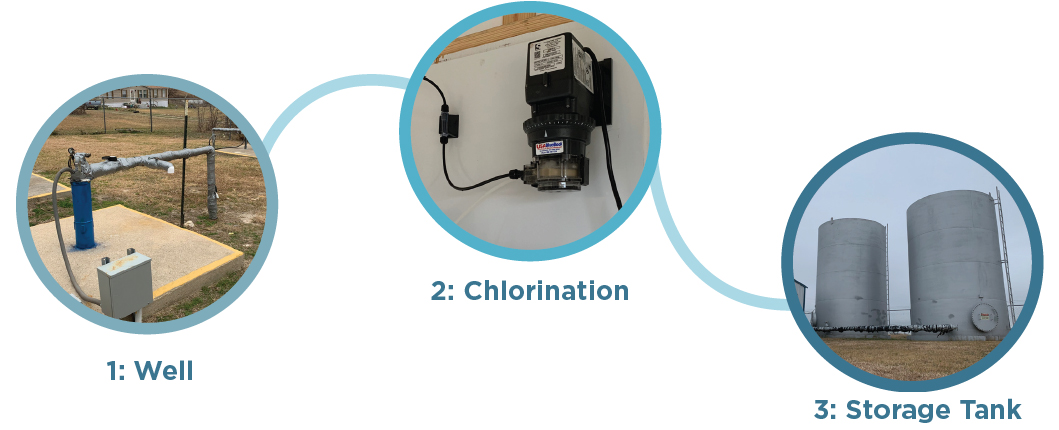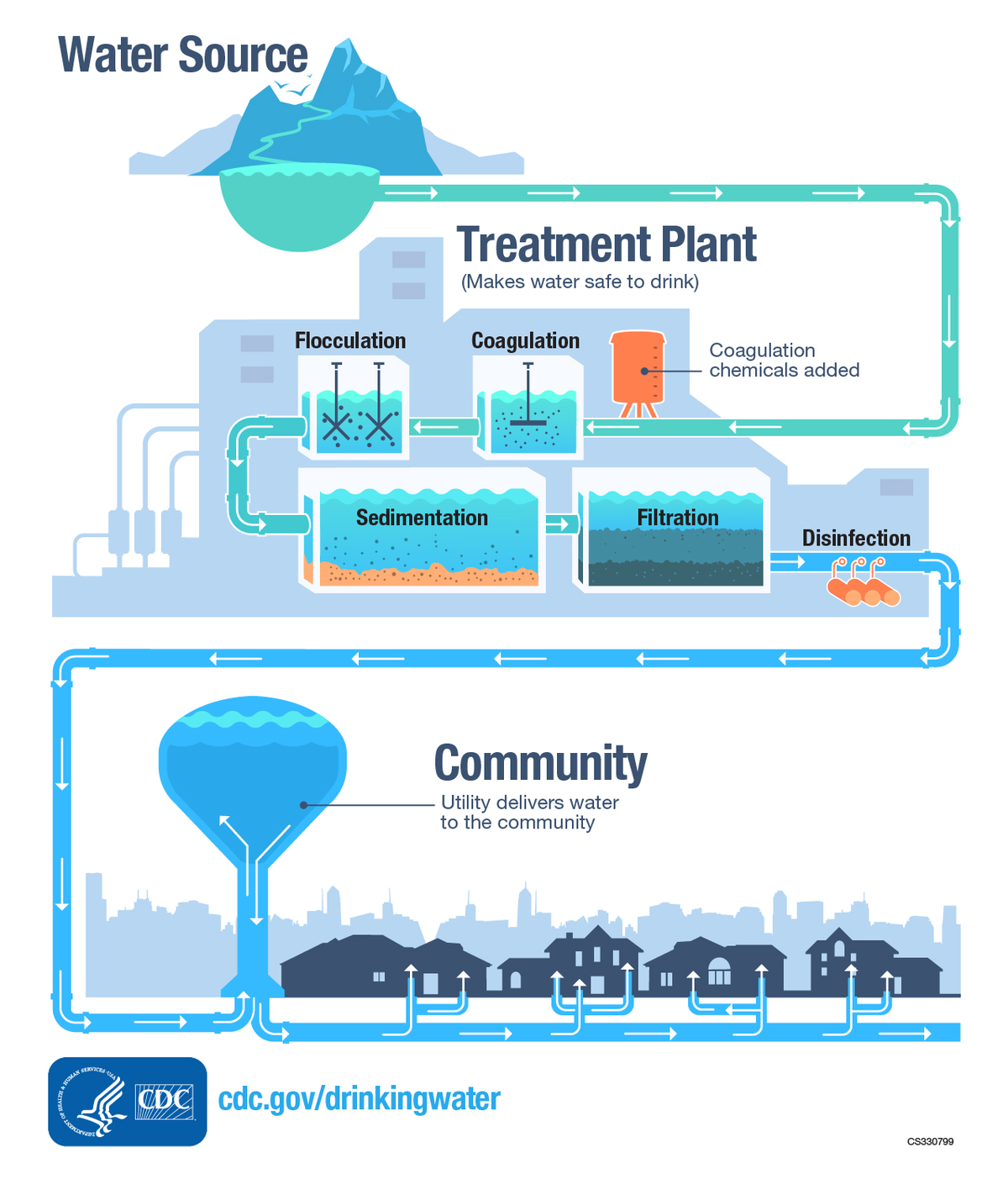Turning groundwater and surface water into drinking water that is safe for consumption is a labor-intensive process.
A safe and sustainable water supply allows people to carry on with their daily activities, however, clean water is a finite resource. Texas Water Utilities breaks down the differences between these water sources and the process for treating each below:
Groundwater

Groundwater is located in underground aquifers. If your drinking water comes from a groundwater source, you may have hard water as a result of naturally occurring minerals, such as magnesium, calcium and iron. Hard water can cause spots on dishes, film on hands after washing them with soap, or a gradual decline in water pressure as it builds up in your pipes over months or years. Minerals such as manganese and iron can cause tinted yellow or orange water and can stain clothing and fixtures.
The following process is used to ensure groundwater is safe to drink:
- Water flows in—Water is pumped by a well from a local aquifer.
- Water is treated—Water is treated and disinfected in order to remove any pathogens that naturally occur in groundwater.
- Storage—Treated water is stored in a tank from where the water is ultimately delivered to the customer.
Surface Water
Water Treatment Steps

Surface Water comes from major reservoirs, river basins, streams, lakes and creeks. While community drinking water is treated before it enters the home, it’s important to take care of the water sources all Texans share. Surface water is affected by boats, wildlife, surface runoff, and human interaction. Texans can minimize the cost of extensive water treatment by being mindful of what unnaturally leaks into our water sources.
The following process is generally used to ensure surface water is safe to drink:
- Water flows in—Water is pumped in from the local lake or reservoir.
- Coagulation—Mixing solutions are added to the water causing sediment particles to attach to each other.
- Flocculation—Water is moved around to form larger sediment particles that are easier to remove.
- Sedimentation—Water flows through a basin or tank to allow the sediment to sink to the bottom for easy removal.
- Filtration—The water passes through a material that filters out sediment particles.
- Disinfection—Naturally occurring pathogens are removed from the water.
- Storage—Treated water goes into a storage tank from which the water is ultimately delivered to the customer.
Because demands on water continue to grow, but water supplies do not, the future of our drinking water relies on everyone lending a hand to conserve, protect and get involved with decisions that affect water resources.

